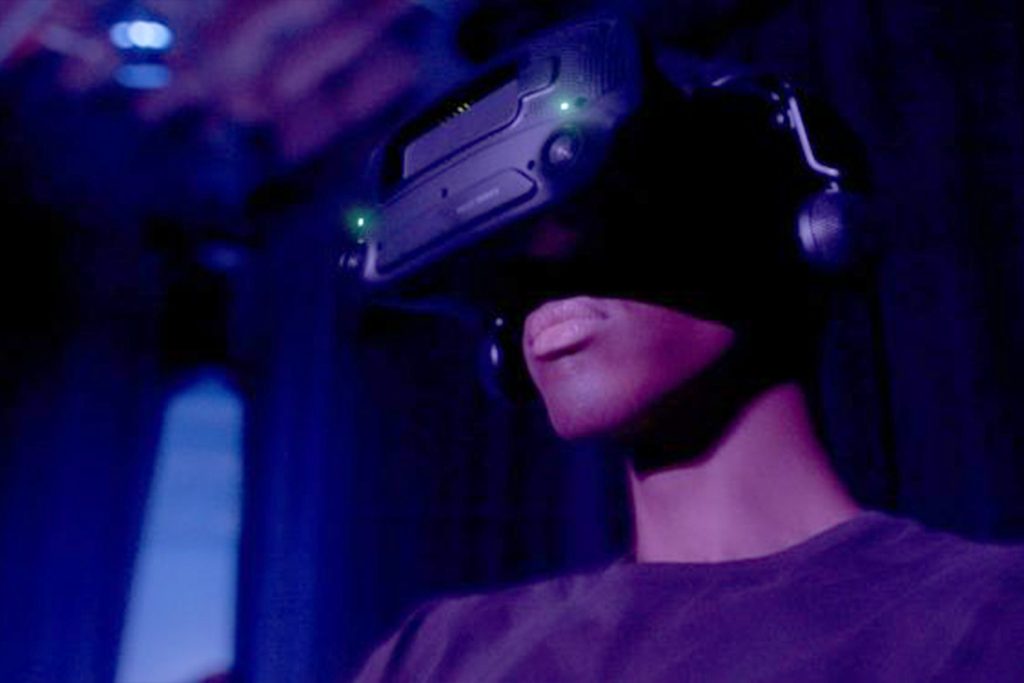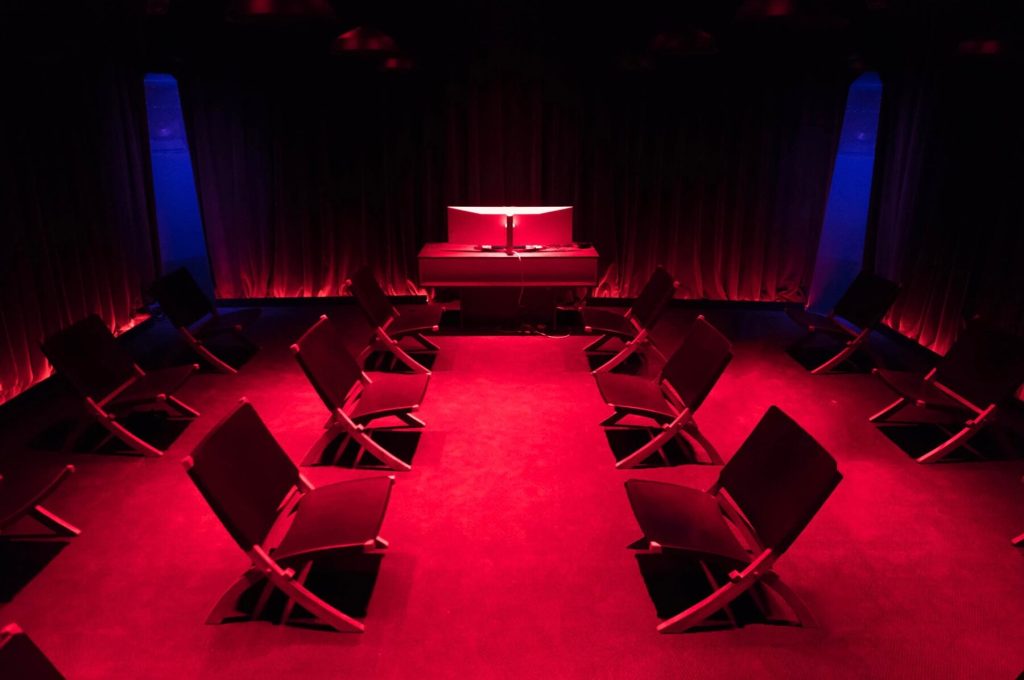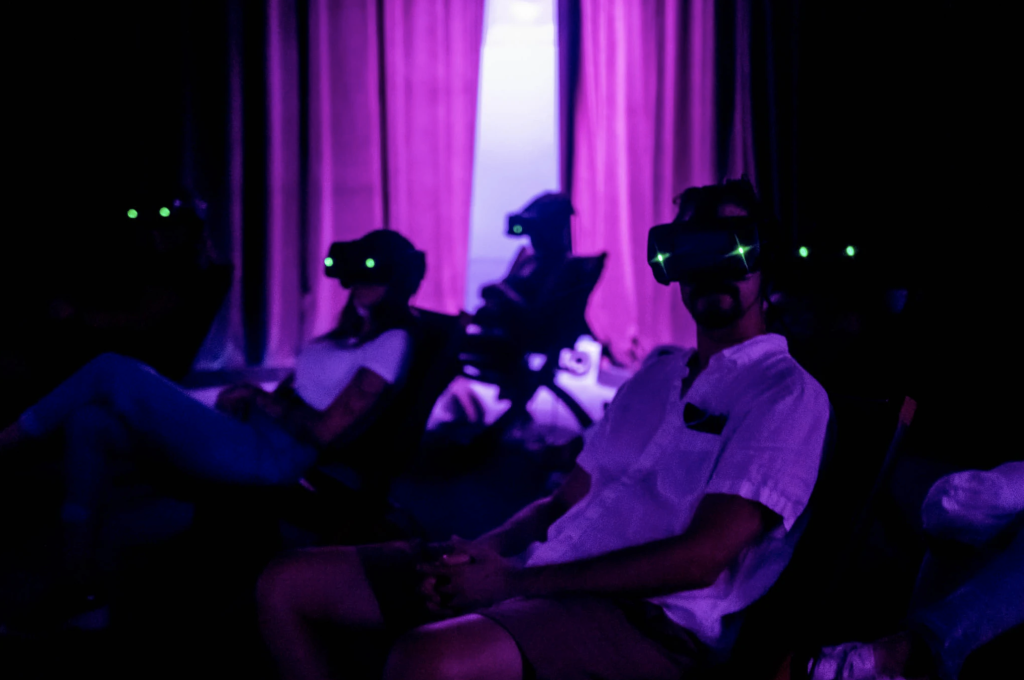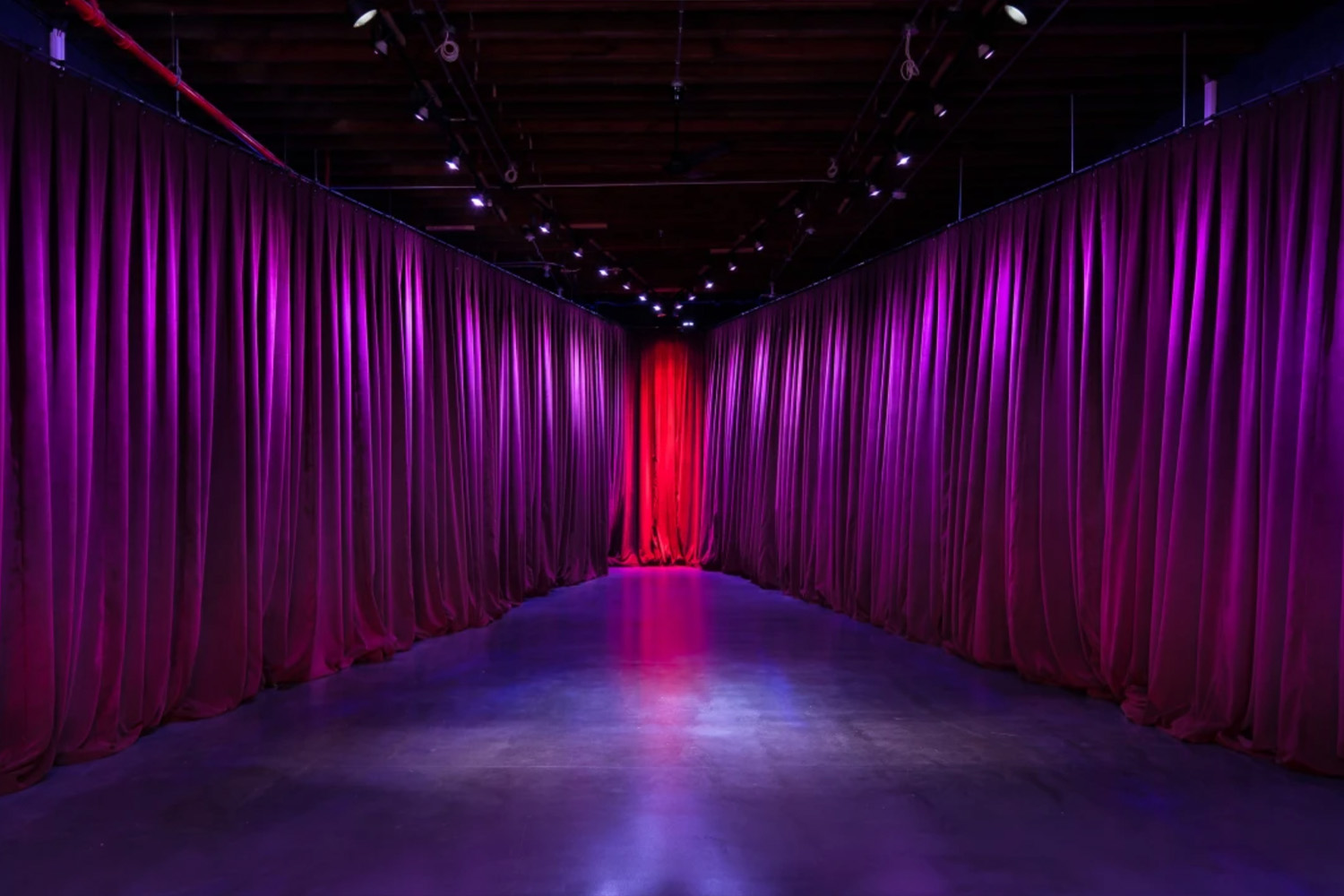Have you heard the one about the new 3D audio experience in New York City…?
The world of immersive audio is one that’s growing rapidly – see our piece on the rise of 3D audio here – particularly when combined with an element of VR.
MoFE’s Liminality uses both virtual reality and spatialised 3D sound over a collection of six hypnotic immersive experiences that explore the chaos, uncertainty and beauty of liminal states. It promises that “those who let go are transformed” through its combination of storytelling and technology.
Creative director, experience designer and WXO Founding Member Julian Rad gives his take on the experience, which unfolds as follows:
- Upon entry, you are welcomed to the “Museum of Future Experience”, interacting with the “docents” who will be your guides through this curated look at technologies framed as slightly ahead of our time. The lobby is dotted with nostalgic perceptions of what the future would look like through those earlier eyes and the docents encourage you to explore.
- You are then gathered up by the cast and given a short monologue about what you are about to experience. In groups of one and two, you’re personally ushered into a room, which is lined with two rows of wood and leather loungers, ringed by black drapes, colored with light, and punctuated by four large obelisks: the audio technology that is the star of the show.
- Once seated, your docent welcomes everyone, walks you through how to use a VR headset and introduces you to an audio sting that will indicate when to put them on.
- What follows is 70 minutes consisting of seven disparate episodes, using either VR or audio immersive storytelling with lighting cues. A female voice welcomes you and guides you through different moments, as well as completing your journey and “bringing you back to your present.”
- Once you’re done, the docents return to usher you out, this time through the backstage door where you get a chance to see all the tech used to power this experience. Large monitors and playback computers abound on the back-of-house booth, before you’re brought back into the original lobby.
What’s good about the experience?

- It’s a heightened medium for experiencing VR. VR as an interaction can be cold and out-of-reach, requiring a lot of care and intention to make it come to life. In this space, we approach VR as a more intimate way of existing in a digital space. MoFE has certainly gone to great lengths to frame the experience of VR in the realm of sensory storytelling. Through the framework of the “museum,” the interactivity of the docents, the scripted voiceover giving the overall audience journey some cohesion stitches together these standalone VR and audio immersive shorts into a curated offering. What’s missing is the curator’s hand – what larger impression is the MoFE collection trying to impress upon us? Aside from showcasing how well certain elements of story hold up in these technological deconstructions, the order imposed on the presentation doesn’t offer any larger narrative or argument.
- The curated VR pieces are excellent. Often, VR users will have the headset and the connection and everything is set up but then, right when the payoff is ready, what they experience is… less than mindblowing. MoFE offers a more curated VR experience, giving us some fantastic examples of virtual storytelling that utilize a number of different approaches. The first piece, Life-Giver, a fully animated VR film by Peter Lindblad and Alex Roseberg, tells a linear narrative of a mother trying to get her daughters onto a ship leaving a broken planet ravaged by climate change. The viewer tags along, in most cases over the shoulders of our protagonists, moving along with the action with almost no control or interactivity. Conscious Existence by Marc Zimmerman takes a more immersive approach, melting you into the ether to be carried along by a young woman narrating your journey. And Mind Palace by Carl Knauss and Dominik Stockhaussen melds a curious approach between the two, abstracting events in a relationship finding a way to create visuals that feel at once empathic and abstract.
- The audio technology is excellent. Interestingly I had run into a beta version of the Ambisonics speaker system a few years back in San Francisco and the tech has certainly progressed. The kind of immersion created by these four obelisks is impressive. Rather than needing countless points of audio through a series of connected speakers scattered about to make a sense of depth and surrounding, these four pillars effectively create a sense of distance and doppler, layering directional sound sources that seem to come from before and behind the audience. Above and below seem limited, but that might have been because of the particular experiences curated.
What could be improved?

- The lighting show that accompanies the audio systems feels remarkably low tech, which is jarring when you’re in a space that calls itself high tech. Low ceilings are an obstacle of course, but there’s more that can be done when it’s such a big part of the experience.
- There’s a great opportunity to add in haptic or even sonic sensations. So much of this experience is about heightening your senses – adding in some bass vibrations behind everyone’s seat would be a delightful addition.
- The cast of docents provides more opportunity for storytelling that could really lean into the “Museum” aspect. I’m imagining more of a curatorial presentation of the lobby exhibits leading to the presentation space, for example.
Which elements do you like so much you’d like to use them in your work?

Immersive audio is a tool that is widely underused, and MoFE is a great example of how effective it can be. In the opening “Visualization” the audience is dunked into darkness and then confronted by the sound of a woman breathing heavily as she run directly towards us. It’s a simple trick, but the tangible effect it had on all of us was palpable. Personally I’ve always been enamored of the charming simplicity and effectiveness of immersive audio, being able to pull the audience’s attention in different directions, highlighting wayfinding, or distracting them to create tricks. More attention spent on designing for the four senses aside from just visuals always provide dividends.
You can book tickets for Liminality here.
Read more WXO Experience Reviews here – if you would like us to review your experience, get in touch.





